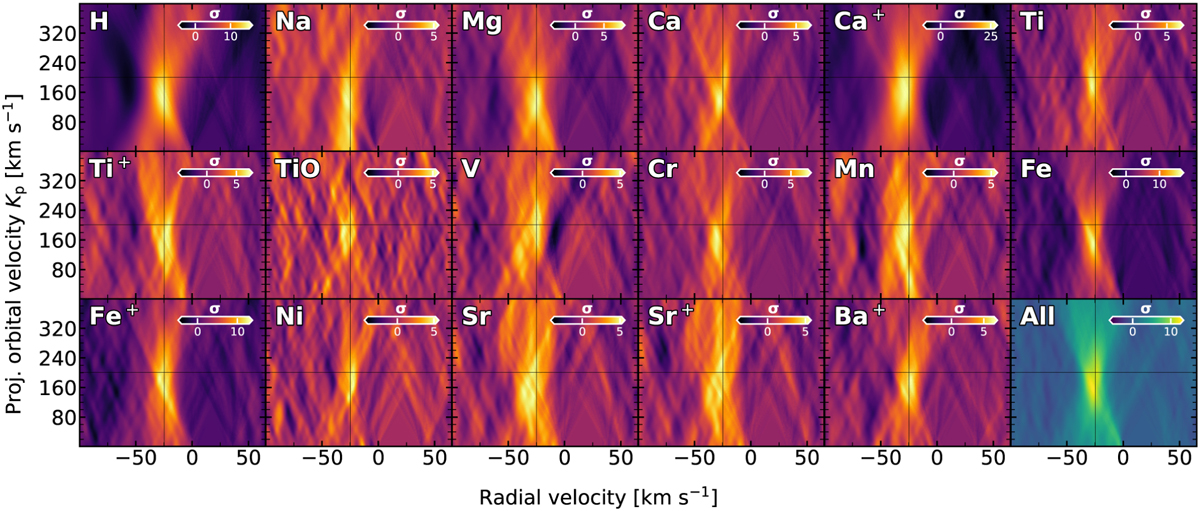Fig. 4

Download original image
Cross-correlation results in the Kp – Vsys space for the species detected in WASP-189 b’s atmosphere during eight transit events with HARPS, HARPS-N, ESPRESSO, and MAROON-X combined. Each panel shows the significance of the detection for a given species, and the solid lines indicate the expected location of the signal if we assume a symmetric planet with a static atmosphere. Deviations from this location can be indicative of chemical asymmetries and dynamical effects. The lower-right panel shows the cross-correlation result in Kp – Vsys space for a template containing all species at a temperature of 3000 K. As previously seen in Prinoth et al. (2022), the atmospheric signal is located at a systemic and projected orbital velocity smaller than the true values, indicating a global dayside-to-nightside flow.
Current usage metrics show cumulative count of Article Views (full-text article views including HTML views, PDF and ePub downloads, according to the available data) and Abstracts Views on Vision4Press platform.
Data correspond to usage on the plateform after 2015. The current usage metrics is available 48-96 hours after online publication and is updated daily on week days.
Initial download of the metrics may take a while.


